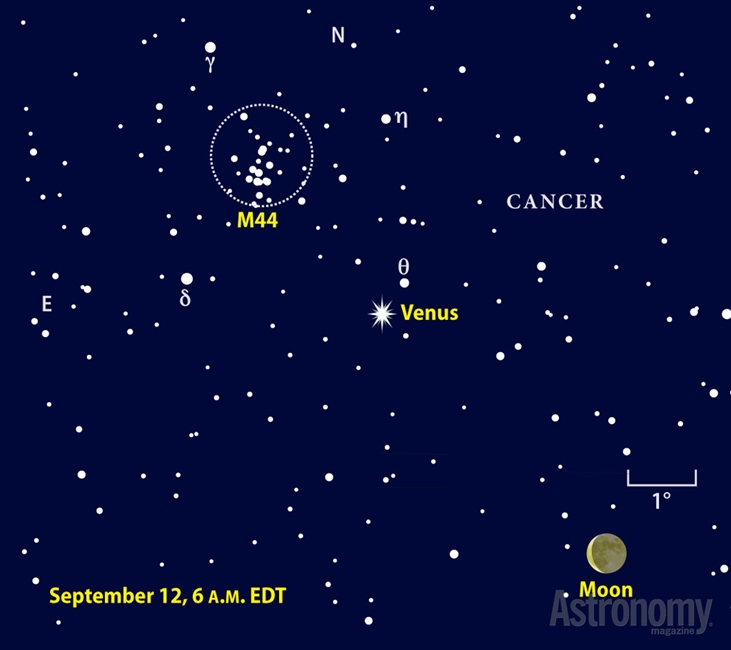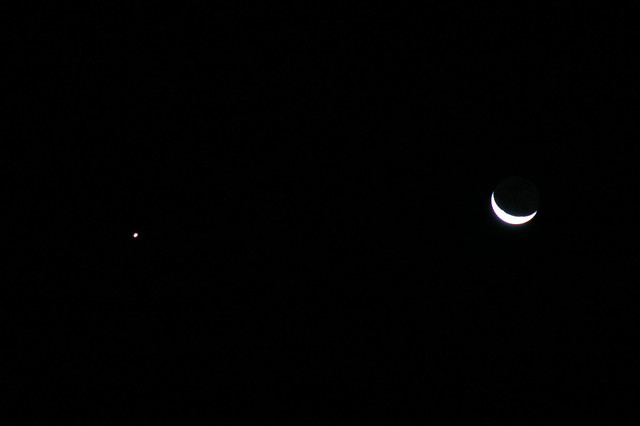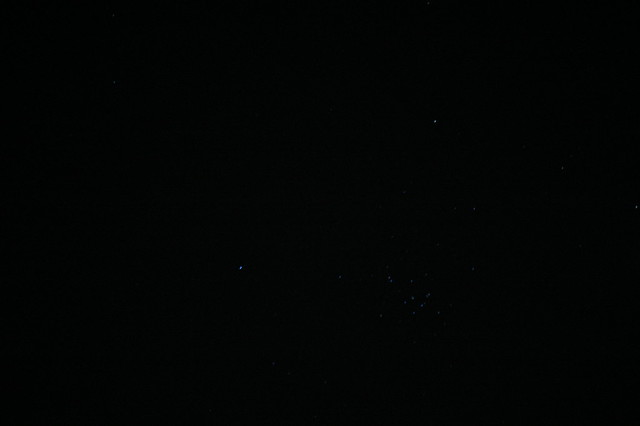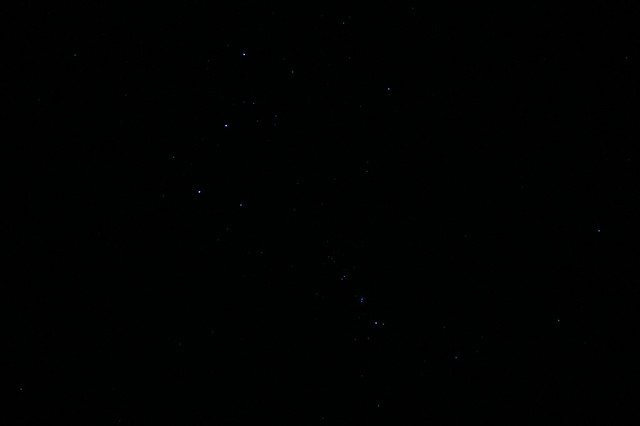I received the alert from my calendar ten minutes before five o’clock Wednesday morning. I wanted to make sure I woke up early enough to have dark skies (well, as dark as they get in my neck of the woods) to observe the Beehive Cluster aligned with Venus and the waning Moon. I planned ahead and had all my equipment ready to go before I went to bed Tuesday night. I subscribe to several astronomy related RSS feeds and always review Astronomy.com‘s “The Sky This Week” as soon as it’s updated to make sure I mark my calendar for interesting observation events. The following is an excerpt from this week’s article:

Wednesday, September 12: If you enjoy seeing spectacular celestial alignments, this is the morning for you. A waning crescent Moon stands 4° southwest of brilliant Venus before dawn while the planet resides 3° southwest of the Beehive star cluster (M44). Although the scene will be lovely with naked eyes under a dark sky, binoculars will deliver the best views. To see the Beehive clearly, you’ll need to observe before twilight begins around 5 a.m. local daylight time. The Moon and Venus remain stunning until about 15 minutes before the Sun rises (from Astronomy.com‘s “Sky This Week” article).
A few stray small puffy clouds drifted around the night sky. A slight breeze blew in from the south or southwest, but my house sheltered the driveway where I setup the tripod and camera. I could not see any of the stars in the constellation Cancer with my naked eye. I live less than ten miles due west, as a bird flies, from the Kansas City International Airport, and the rest of Kansas City sprawls continuously south along the eastern horizon down to the southeast quadrant. Seeing anything faint below 20 degrees above the horizon is not easily accomplished.
With my binoculars, I could see the stars that make up Cancer, and I could clearly see the Beehive Cluster (M44). I affixed my telephoto lens to my camera, but looking through the tiny viewfinder I could only see Venus. So I guessed as best I could with placement relative to Venus and took a few photos. I tried to capture a few other interesting objects much higher in the sky, like Jupiter, Orion’s sword, and the Pleiades again.




Click here to see the entire album of photos from Wednesday morning.
Thursday dawned completely overcast, with rain scheduled for the entire day. We need it so I’m not complaining.
Friday night I’ll attend the club’s local star party and have already organized my observing list so I can make great strides towards my Astro Quest observing award. Friday morning, if I can manage it after observing late into the night, I hope to capture the last glimpse of the old moon before it turns new around nine o’clock Saturday evening.
